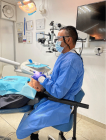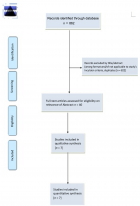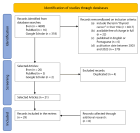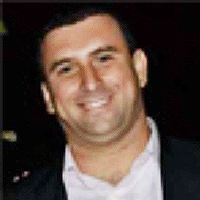Abstract
Review Article
Application and utility of alternative methods in isolation of pure cells from forensic biological mixtures in modern-day: a review
Suneel Prajapati*, Poonam Rajmane, P Jayakrishna, Maya S Nair, Priyanka Kshirsagar and Mukul Meshram
Published: 23 August, 2021 | Volume 5 - Issue 1 | Pages: 041-047
Development of genetic profiles from the biological mixtures has remained challenging, although modern-day technologies may help forensic scientists to attain a reliable genetic profile in the identification of the accused.
In the case of rape, vaginal swab exhibits usually contain epithelial cells of victims and sperm cells of accused, such samples are more challenging when there is more than one contributor. In such cases, separation of distinct cells from a mixture that includes blood cells, epithelial cells and sperm cells for their single genetic profile is important.
In the last ten decades several new techniques were developed and invented for the separation of single cell from the biological mixture that includes differential lysis, laser micro-dissection, cell sorting (FACS), sieve-based filtration, (vi) micro-fluidic devices or immunomagnetic beads cell separation of fresh samples, and the magnetic activated cell sorting (MACS).
Out of them, some techniques have been commonly applied for cell separation in forensic biology. Each technique has its own limitation. Some recent studies showed, magnetic activated cell sorting (MACS), laser capture microdissection (LCM), DEPArray technology and fluorescence activated cell sorting (FACS) has proved to be effective in separation of single cell from cell mixtures.
Therefore, in this review we have evaluated these four alternative methods and their potential application in the modern-day over the others for the separation of a single cell from the mixture. In this review we also discuss the advantage of these methods and their modern–day applicability and acceptance in the forensic world.
Read Full Article HTML DOI: 10.29328/journal.jfsr.1001026 Cite this Article Read Full Article PDF
Keywords:
Biological exhibits; FACS; Single cell separation; Biological mixture; Cell sorting; Genotype
References
- Gill P, Jeffreys AJ, Werrett DJ. Forensic application of DNA 'fingerprints'. Nature. 1985; 318: 577-579. PubMed: https://pubmed.ncbi.nlm.nih.gov/3840867/
- Wiegand P, Schurenkamp M, Schutte U. DNA extraction from mixtures of body fluid using mild preferential lysis. Int J Legal Med. 1992; 104: 359-360. PubMed: https://pubmed.ncbi.nlm.nih.gov/1515365/
- Yoshida K, Sekiguchi K, Mizuno N, Kasai K, Sakai I, et al, The modified method of two-step differential extraction of sperm and vaginal epithelial cell DNA from vaginal fluid mixed with semen. Forensic Sci Int. 1995; 72: 25–33. PubMed: https://pubmed.ncbi.nlm.nih.gov/7705732/
- Anslinger K, Bayer B, Mack B, Eisenmenger W. Sex-specific fluorescent labelling of cells for laser microdissection and DNA profiling. Int J Legal Med. 2007; 121: 54–56. PubMed: https://pubmed.ncbi.nlm.nih.gov/16552569/
- Sanders CT, Sanchez N, Ballantyne J, Peterson DA. Laser microdissection separation of pure spermatozoa from epithelial cells for short tandem repeat analysis. J Forensic Sci. 2006; 51: 748–757. PubMed: https://pubmed.ncbi.nlm.nih.gov/16882215/
- Schoell WM, Klintschar M, Mirhashemi R, Pertl B. Separation of sperm and vaginal cells with flow cytometry for DNA typing after sexual assault. Obstet Gynecol. 1999; 94: 623–627. PubMed: https://pubmed.ncbi.nlm.nih.gov/10511370/
- Schoell WM, Klintschar M, Mirhashemi R, Strunk D, Giuliani A, et al. Separation of sperm and vaginal cells based on ploidy, MHC class I, CD45-, and cytokeratin expression for enhancement of DNA typing after sexual assault. Cytometry. 1999; 36: 319–323. PubMed: https://pubmed.ncbi.nlm.nih.gov/10404147/
- Di Nunno N, Melato M, Vimercati A, Di Nunno C, Costantinides F, et al. DNA identification of sperm cells collected and sorted by flow cytometry. Am J Forensic Med Pathol. 2003; 24: 254–270. PubMed: https://pubmed.ncbi.nlm.nih.gov/12960662/
- Verdon TJ, Mitchell RJ, Chen W, Xiao K, van Oorschot RA. FACS separation of non-compromised forensically relevant biological mixtures. Forensic Sci Int Genet. 2015; 14: 194–200.
- Chen J, Kobilinsky L, Wolosin D, Shaler R, Baum H. A physical method for separating spermatozoa from epithelial cells in sexual assault evidence. J Forensic Sci. 1998; 43: 114–118. PubMed: https://pubmed.ncbi.nlm.nih.gov/9456531/
- Garvin AM. Filtration based DNA preparation for sexual assault cases. J Forensic Sci. 2003; 48: 1084–1087. PubMed: https://pubmed.ncbi.nlm.nih.gov/14535671/
- Horsman KM, Barker SL, Ferrance JP, Forrest KA, Koen KA, et al. Separation of sperm and epithelial cells in a microfabricated device: potential application to forensic analysis of sexual assault evidence. Anal Chem. 2005; 77: 742–749. PubMed: https://pubmed.ncbi.nlm.nih.gov/15679339/
- Li XB, Wang QS, Feng Y, Ning SH, Miao YY, et al. Magnetic bead based separation of sperm from buccal epithelial cells using a monoclonal antibody against MOSPD3. Int J Legal Med. 2014; 128: 905–911. PubMed: https://pubmed.ncbi.nlm.nih.gov/24590379/
- Feng L, Xu C, Zeng X, Zhang H, Yang F, et al. Y-chromosomal haplotyping of single sperm cells isolated from semen mixtures – a successful identification of three perpetrators in a multisuspect sexual assault case. Croat Med J. 2014; 55: 537-415. PubMed: https://pubmed.ncbi.nlm.nih.gov/25358887/
- Budimlija ZM, Popiolek D, Fogt F, Prinz M. Forensic applications of laser capture microdissection: use in DNA-based parentage testing and platform validation. Croat Med J. 2005; 46: 549-555. PubMed: https://pubmed.ncbi.nlm.nih.gov/16100757/
- D i Martino D, Staiti N, Simone A, Todaro P. Laser microdissection and DNA typing of cells from single hair follicles. Forensic Sci Int. 2004; 146: S155-157. PubMed: https://pubmed.ncbi.nlm.nih.gov/15639565/
- E lliott K, Lambert C, Burroughes TR, Gill P. Use of laser microdissection greatly improves the recovery of DNA from sperm on microscope slides. Forensic Sci Int. 2003; 137: 28-36. PubMed: https://pubmed.ncbi.nlm.nih.gov/14550610/
- Vandewoestyne M, Deforce D. Laser capture microdissection in forensic research: a review. Int J Legal Med. 2010; 124: 513-521. PubMed: https://www.ncbi.nlm.nih.gov/pmc/articles/PMC2952761/
- Vandewoestyne M, Van Hoofstat D, Van Nieuwerburgh F, Deforce D. Suspension fluorescence in situ hybridization (S-FISH) combined with automatic detection and laser microdissection for STR profiling of male cells in male/female mixtures. Int J Legal Med. 2009; 123: 441-447. PubMed: https://pubmed.ncbi.nlm.nih.gov/19319556/
- Castella V, Dimo-Simonin C, Mangin P. Forensic evaluation of the QIAshredder/QIAamp DNA extraction procedure Foren Sci Int. 2006; 156: 70-73. PubMed: https://pubmed.ncbi.nlm.nih.gov/16326058/
- Seah LH, Wee BH. Separation patterns of sperm mixtures: The major-minor impact. For Sci Inte: Genetics Supplement Series. 2015; 5: e582-e583
- Gill P, Haned H, Bleka O, Hansson O, Dorum G, et al. Genotyping and interpretation of STR-DNA: Lowtemplate,mixtures and database matches-Twenty years of research and development. Forensic Sci Int Genet. 2015; 18: 100-117. PubMed: https://pubmed.ncbi.nlm.nih.gov/25866376/
- Fontana F, Rapone C, Bregola G, Aversa R, deMeo A, et al. Isolation and genetic analysis of pure cells from forensic biological mixtures: The precision of a digital approach. Forensic Sci Int Genet. 2017; 29: 225–241. PubMed: https://pubmed.ncbi.nlm.nih.gov/28511094/
- Kuperus WR, Hummel KH, Roney JM. Crime scene links through DNA evidence: the practical experience from Saskatchewan casework. Can Soc Forensic Sci J 2003; 36: 19–28.
- Farmen RKB, Haukeli I, Ruoff P, Froyland ES. Assessing the presence of female DNA on post-coital penile swabs: relevance to the investigation of sexual assault. J Forensic Leg Med. 2012; 19: 386–389. PubMed: https://pubmed.ncbi.nlm.nih.gov/22920760/
- Sweet D, Lorente M, Lorente JA, Valenzuela A, Villanueva E. An improved method to recover saliva from human skin: the double swab technique. J Forensic Sci. 1997; 42: 320–322. PubMed: https://pubmed.ncbi.nlm.nih.gov/9068193/
- Lee HC, Ladd C. Preservation and collection of biological evidence. Croatian Med J. 2001; 42: 225–228. PubMed: https://pubmed.ncbi.nlm.nih.gov/11387627/
- Khaldi N, Miras A, Botti K, Benali L, Gromb S. Evaluation of three rapid detection methods for the forensic identification of seminal fluid in rape cases. J Forensic Sci. 2004; 49: 749–753. PubMed: https://pubmed.ncbi.nlm.nih.gov/15317189/
- Bozzo WR, Colussi AG, Ortiz MI, Lojo MM. DNA recovery from different evidences in 300 cases of sexual assault. Forensic Sci InterGeneti Supple Seri. 2009; 2: 141-142.
- Johnson D, Peterson J, Sommers I, Baskin D. Use of forensic science in investigating crimes of sexual violence: contrasting its theoretical potential with empirical realities. Violence Against Women. 2012; 18: 193–222. PubMed: https://pubmed.ncbi.nlm.nih.gov/22433228/
- Lee HC, Ladd C, Scherczinger CA, Bourke MT. Forensic applications of DNA typing: part 2: collection and preservation of DNA evidence. Am J Foren Med Pathol. 1998; 19: 10-18. PubMed: https://pubmed.ncbi.nlm.nih.gov/9539385/
- Leemans Evaluation and methodology for the isolation and analysis of LCN‐DNA before and after dactyloscopic enhancement of fingerprints. Int Congress Ser. 2006; 1288: 583‐585.
- Lauk C, Schaff J. A New Approach for the Extraction of DNA from Postage Forensic Science Communications. 2007; 9.
- Dean L, Kwon YJ, Philpott MK, Stanciu CE, Seashols-Williams SJ, et al. Separation of uncompromised whole blood mixtures for single source STR profiling using fluorescently-labeled human leukocyte antigen (HLA) probes and fluorescence activated cell sorting (FACS). Forensic Sci Int Genet. 2015; 17. PubMed: https://pubmed.ncbi.nlm.nih.gov/25796046/
- Zhao XC, Wang L, Sun J, Jiang BW, Zhang EL, et al. Isolating Sperm from Cell Mixtures Using Magnetic Beads Coupled with an Anti-PH-20 Antibody for Forensic DNA Analysis. PLoS One. 2016; 11: e0159401. PubMed: https://pubmed.ncbi.nlm.nih.gov/27442128/
- Xu Y, Xie J, Chen R, Cao Y, Ping Y, et al. Fluorescence- and magnetic-activated cell sorting strategies to separate spermatozoa involving plural contributors from biological mixtures for human identification. Sci Rep. 2016; 6: 36515. PubMed: https://pubmed.ncbi.nlm.nih.gov/27857155/
- Murray C, McAlister C, Elliott K. Identification and isolation of male cells using fluorescence in situ hybridisation and laser microdissection, for use in the investigation of sexual assault. Forensic Sci Int Genet. 2007; 1: 247–252. PubMed: https://pubmed.ncbi.nlm.nih.gov/19083769/
- Williamson VR, Laris TM, Romano R, Marciano MA. Enhanced DNA mixture deconvolution of sexual offense samples using the DEPArrayTM system. Forensic Sci Int Genet. 2018; 34: 265–276. PubMed: https://pubmed.ncbi.nlm.nih.gov/29602061/
- Ashkin A, Dziedzic JM, Bjorkholm JE, Chu S. Observation of a single-beam gradient force optical trap for dielectric particles. Opt Lett. 1986; 11: 288. PubMed: https://pubmed.ncbi.nlm.nih.gov/19730608/
- Said TM, Agarwal A, Zborowski M, Grunewald S, Glander HJ, et al. Utility of magnetic cell separation as a molecular sperm preparation technique. J Androl. 2008; 29: 134–142. PubMed: https://pubmed.ncbi.nlm.nih.gov/18077822/
- Anslinger K, Bayer B, Danilov SM, Metzger R. Application of sperm-specific antibodies for the separation of sperm from cell mixtures. Forensic Science International: Genetics Supplement Series. 2008; 1: 394–395.
- Li XB, Wang QS, Yu Feng Y, Ning SH, Miao YY, et al. Magnetic bead-based separation of sperm from buccal epithelial cells using a monoclonal antibody against MOSPD3. Int J Legal Med 2014; 128: 905–911. PubMed: https://pubmed.ncbi.nlm.nih.gov/24590379/
- Xu Y, Xie J, Chen R, Cao Y, Ping Y, et al. Fluorescence- and magneticactivated cell sorting strategies to separate spermatozoa involving plural contributors from biological mixtures for human identification Sci Rep. 2016; 6: 36515. PubMed: https://pubmed.ncbi.nlm.nih.gov/27857155/
- Polzer B, Medoro G, Pasch S, Fontana F, Zorzino L, et al. Molecular profiling of single circulating tumor cells withdiagnostic intention. EMBO Mol Med. 2014; 30: 1371-1386. PubMed: https://pubmed.ncbi.nlm.nih.gov/25358515/
- Campton DE, Ramirez AB, Nordberg JJ, Drovetto NA, Clein C, et al. High-recovery visual identification and singlecellretrieval of circulating tumor cells for genomic analysis using a dualtechnology platform integrated with automated immunofluorescence staining. BMC Cancer. 2015; 6: 360. PubMed: https://pubmed.ncbi.nlm.nih.gov/25944336/
- Carpenter E, Rader J, Ruden J, Rappaport EF, Hunter KN, et al. Dielectrophoretic capture and genetic analysis of single neuroblastoma tumor cells. Front Oncol. 2014; 31: 201. PubMed: https://pubmed.ncbi.nlm.nih.gov/25133137/
- Espina V, Wulfkuhle JD, Calvert VS, VanMeter A, Zhou W, et al. Laser-capturemicrodissection. Nat Protoc 2006; 1: 586-603. PubMed: https://pubmed.ncbi.nlm.nih.gov/17406286/
- Kolble K. The LEICA microdissection system: design and applications. J Mol Med. 2000; 78: 24–25. PubMed: https://pubmed.ncbi.nlm.nih.gov/11043387/
- Micke P, Ostman A, Lundeberg J, Ponten F. Laser-assisted cell microdissection using the PALM system. Methods MolBiol. 2005; 293: 151–166. PubMed: https://pubmed.ncbi.nlm.nih.gov/16028418/
- Schutze K, Posl H, Lahr G. Laser micro manipulation systems as universal tools in cellular and molecular biology and in medicine. Cell MolBiol. 1998; 44: 735–746. PubMed: https://pubmed.ncbi.nlm.nih.gov/9764744/
- Emmert-Buck MR, Bonner RF, Smith PD. Laser capture microdissection. Science. 1996; 274: 998–1001. PubMed: https://pubmed.ncbi.nlm.nih.gov/8875945/
- Bonner RF, Emmert-Buck M, Cole K. Laser capture microdissection: molecular analysis of tissue. Science. 1997; 278: 1481–1483. PubMed: https://pubmed.ncbi.nlm.nih.gov/9411767/
- Costa S, Correia-de-SP, Porto MJ, Cain L. The Use of Laser Microdissection in Forensic Sexual Assault Casework: Pros and Cons Compared to Standard Methods. J Forensic Sci. 2017; 62: 998-1006. PubMed: https://pubmed.ncbi.nlm.nih.gov/28133731/
- Di Martino D, Giuffre G, Staiti N, Simone A, Todaro P, Saravo L. Laser microdissection and DNA typing of cells from singlehair follicles. Forensic SciInt. 2004; 146: S155–157. PubMed: https://pubmed.ncbi.nlm.nih.gov/15639565/
- Anoruo B, van Oorschot R, Mitchell J, Howells D. Isolating cells from non-sperm cellular mixtures using the PALMmicrolaser micro dissection system. Forensic Sci Int. 2007; 173: 93–96. PubMed: https://pubmed.ncbi.nlm.nih.gov/17459628/
- Thorogate R, Moreira JC, Jickells S, Miele MM, Daniel B. A novel fluorescence-based method in forensic sciencefor the detection of blood in situ. Forensic Sci Int Genet. 2008; 2: 363–371. PubMed: https://pubmed.ncbi.nlm.nih.gov/19083849/
- Chalmers JJ, Zborowski M, Sun L, Moore L. Flow through, immunomagnetic cell separation. Biotechnol Prog. 199; 14: 141–148. PubMed: https://pubmed.ncbi.nlm.nih.gov/9496679/
- Jing Y, Moore LR, Schneider T, Williams PS, Chalmers JJ, et al. Negative selection of hematopoietic progenitor cells by continuous magnetophoresis. Exp Hematol. 2007; 35: 662–672. PubMed: https://pubmed.ncbi.nlm.nih.gov/17379076/
Figures:
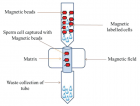
Figure 1
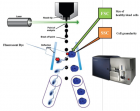
Figure 2
Similar Articles
-
Application and utility of alternative methods in isolation of pure cells from forensic biological mixtures in modern-day: a reviewSuneel Prajapati*,Poonam Rajmane,P Jayakrishna,Maya S Nair,Priyanka Kshirsagar,Mukul Meshram. Application and utility of alternative methods in isolation of pure cells from forensic biological mixtures in modern-day: a review. . 2021 doi: 10.29328/journal.jfsr.1001026; 5: 041-047
Recently Viewed
-
Validation of Prognostic Scores for Attempted Vaginal Delivery in Scar UterusMouiman Soukaina*,Mourran Oumaima,Etber Amina,Zeraidi Najia,Slaoui Aziz,Baydada Aziz. Validation of Prognostic Scores for Attempted Vaginal Delivery in Scar Uterus. Clin J Obstet Gynecol. 2025: doi: 10.29328/journal.cjog.1001185; 8: 023-029
-
Scientific Analysis of Eucharistic Miracles: Importance of a Standardization in EvaluationKelly Kearse*,Frank Ligaj. Scientific Analysis of Eucharistic Miracles: Importance of a Standardization in Evaluation. J Forensic Sci Res. 2024: doi: 10.29328/journal.jfsr.1001068; 8: 078-088
-
A study of coagulation profile in patients with cancer in a tertiary care hospitalGaurav Khichariya,Manjula K*,Subhashish Das,Kalyani R. A study of coagulation profile in patients with cancer in a tertiary care hospital. J Hematol Clin Res. 2021: doi: 10.29328/journal.jhcr.1001015; 5: 001-003
-
Additional Gold Recovery from Tailing Waste By Ion Exchange ResinsAshrapov UT*, Malikov Sh R, Erdanov MN, Mirzaev BB. Additional Gold Recovery from Tailing Waste By Ion Exchange Resins. Int J Phys Res Appl. 2024: doi: 10.29328/journal.ijpra.1001098; 7: 132-138
-
Prevalence of performance-enhancing drug use among gym members in Saudi Arabia, Riyadh: A cross-sectional surveyRawan Eskandarani*,Abdulaziz Alhamad,Saad Almodameg. Prevalence of performance-enhancing drug use among gym members in Saudi Arabia, Riyadh: A cross-sectional survey. J Sports Med Ther. 2022: doi: 10.29328/journal.jsmt.1001062; 7: 039-043
Most Viewed
-
Evaluation of Biostimulants Based on Recovered Protein Hydrolysates from Animal By-products as Plant Growth EnhancersH Pérez-Aguilar*, M Lacruz-Asaro, F Arán-Ais. Evaluation of Biostimulants Based on Recovered Protein Hydrolysates from Animal By-products as Plant Growth Enhancers. J Plant Sci Phytopathol. 2023 doi: 10.29328/journal.jpsp.1001104; 7: 042-047
-
Sinonasal Myxoma Extending into the Orbit in a 4-Year Old: A Case PresentationJulian A Purrinos*, Ramzi Younis. Sinonasal Myxoma Extending into the Orbit in a 4-Year Old: A Case Presentation. Arch Case Rep. 2024 doi: 10.29328/journal.acr.1001099; 8: 075-077
-
Feasibility study of magnetic sensing for detecting single-neuron action potentialsDenis Tonini,Kai Wu,Renata Saha,Jian-Ping Wang*. Feasibility study of magnetic sensing for detecting single-neuron action potentials. Ann Biomed Sci Eng. 2022 doi: 10.29328/journal.abse.1001018; 6: 019-029
-
Pediatric Dysgerminoma: Unveiling a Rare Ovarian TumorFaten Limaiem*, Khalil Saffar, Ahmed Halouani. Pediatric Dysgerminoma: Unveiling a Rare Ovarian Tumor. Arch Case Rep. 2024 doi: 10.29328/journal.acr.1001087; 8: 010-013
-
Physical activity can change the physiological and psychological circumstances during COVID-19 pandemic: A narrative reviewKhashayar Maroufi*. Physical activity can change the physiological and psychological circumstances during COVID-19 pandemic: A narrative review. J Sports Med Ther. 2021 doi: 10.29328/journal.jsmt.1001051; 6: 001-007

HSPI: We're glad you're here. Please click "create a new Query" if you are a new visitor to our website and need further information from us.
If you are already a member of our network and need to keep track of any developments regarding a question you have already submitted, click "take me to my Query."









